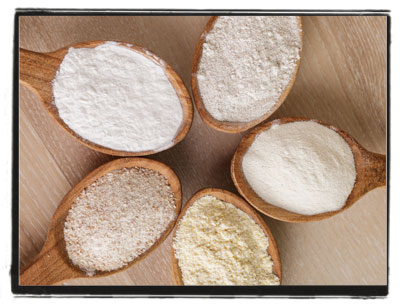
You can swap out most, if not all, of our wheat flour recipes using the flours and methods referred to below. However, as with any recipe, tweaking it a bit to your liking is sometimes required. Play around with your recipes. Have fun with them. Do not stress over them, ever. It's simply not allowed. =)
If a recipe calls for other ingredients containing gluten, we leave it up to you to switch them out with a gluten-free product.
Cup4Cup is a gluten-free flour created by Chef Thomas Keller and can be used in the same proportion as an all-purpose flour in any recipe, cup for cup, hence the name; Cup4Cup.
Gluten-free baked goods can feel denser than others when using Cup4Cup, but adding Xanthan Gum will keep the items from crumbling. Use one teaspoon per cup in bread recipes and one teaspoon per three cups in cake recipes. Xanthan gum is usually not needed when making cookies.
Bobs Red Mill 1 to 1 Gluten-Free Baking Flour is another product we're crazy about. We are adding Arrowroot and Xanthan gum to this flour will create the perfect blend for baked goods. Combine 2 cups of Bob's 1 to 1 Gluten-Free Baking Flour with 1/2 cup arrowroot and 1 1/2 teaspoons of xanthan gum for many recipes. You can double, triple, or even quadruple the batch and keep it on hand for future baking needs.
Some gluten-free flours have no iron, protein, or fiber and are very high in carbohydrates, while others contain a fair amount of nutrients. But, again, reading labels will help you decide what works best for you and your recipes.
Tapioca flour will cause your bread to have more of a chewy consistency, but it's not very nutritious, which is why we don't suggest you use it for all of your baked goods.
As the celiac disease becomes more prevalent, manufacturers have begun fortifying their gluten-free flours. So again, check labels for added vitamins and minerals.
Many gluten-free flours, arrowroot, and xanthan gum can be found at most health-food stores, in most grocery stores' natural or organic sections, and at Whole Foods.

